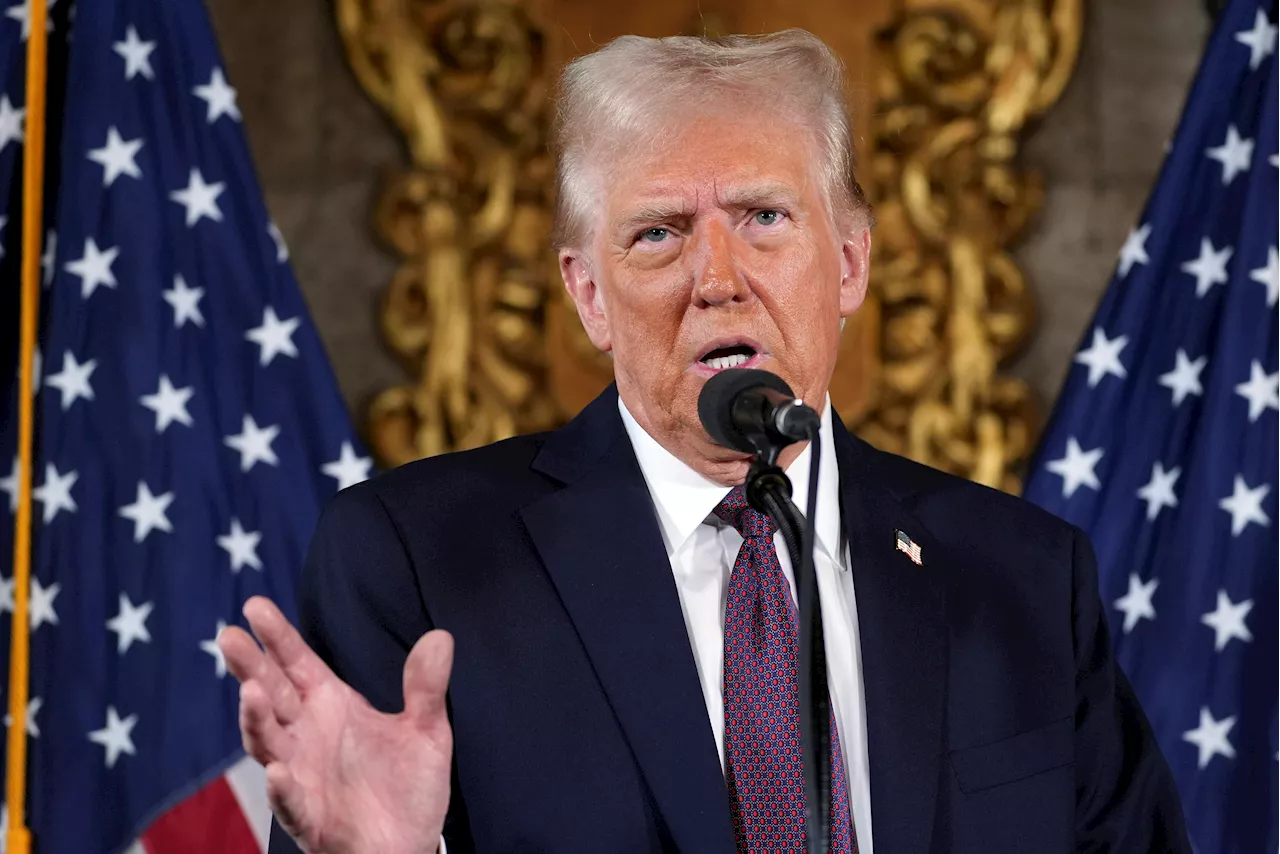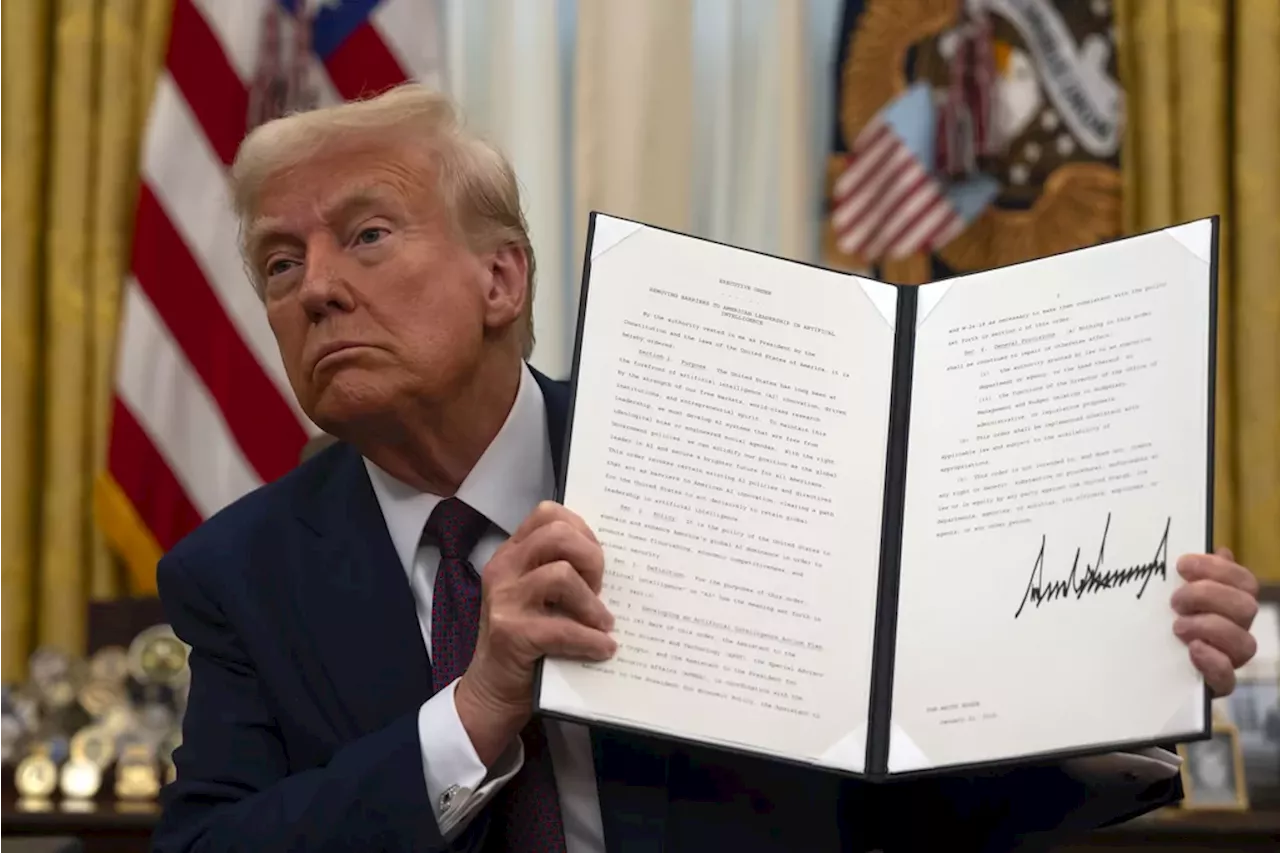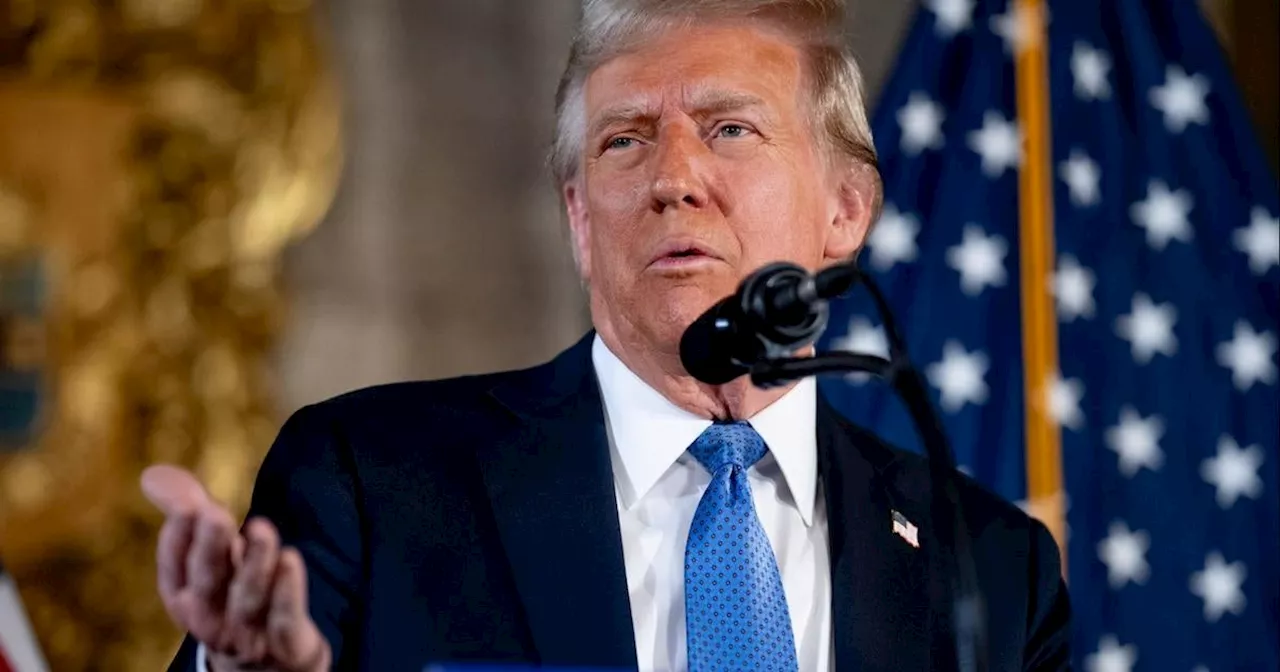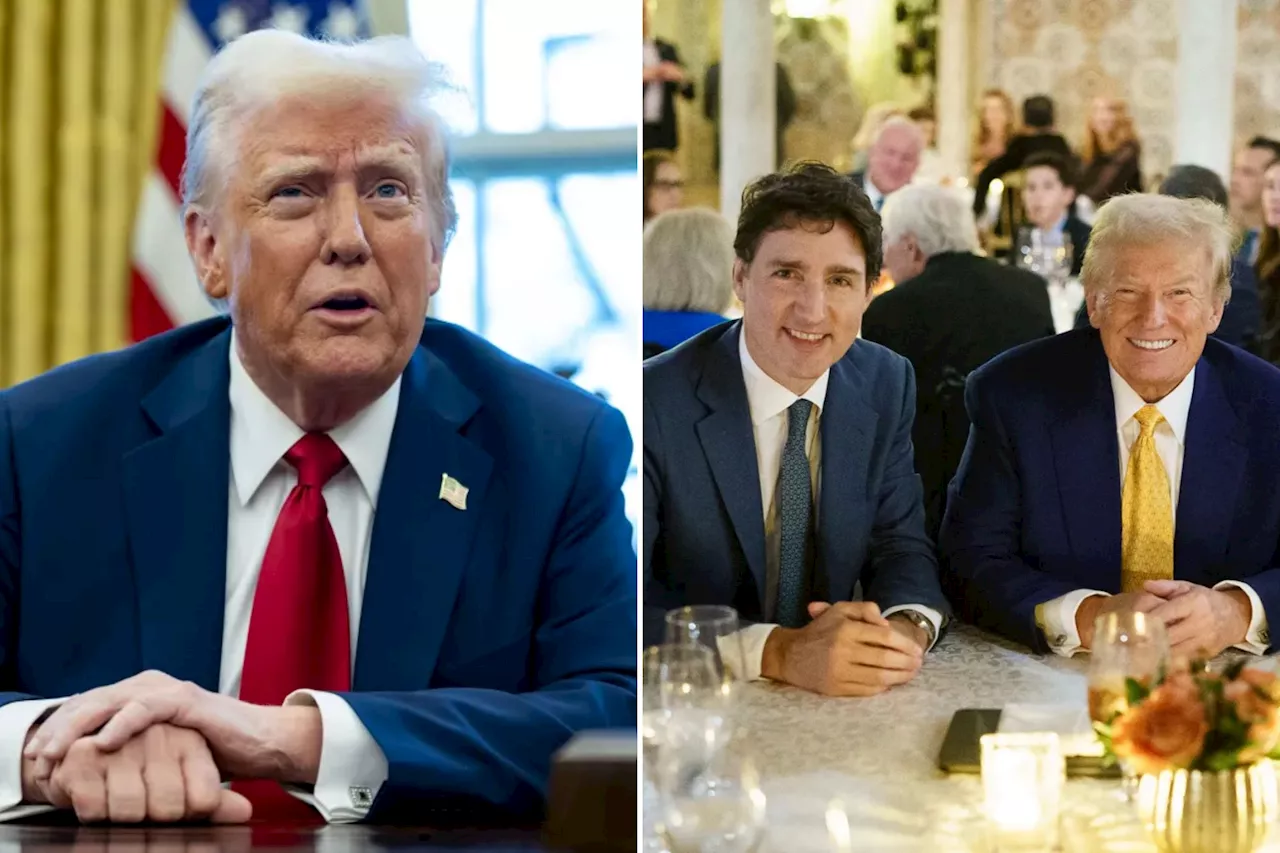President Trump announced new tariffs on goods imported from Canada, Mexico, and China, citing concerns over illegal immigration, drug trafficking, and trade deficits. The tariffs, which take effect Saturday, are expected to increase consumer prices and potentially disrupt supply chains.
White House press secretary Karoline Leavitt confirmed President Donald Trump will impose 25% tariffs on items imported from Canada and Mexico and a 10% tariff on Chinese imports starting Saturday, potentially increasing consumer prices. President Trump cited three reasons for the tariffs: illegal immigration, drug trafficking across borders, and trade deficits.
'I'll be putting a tariff of 25% on Canada and separately 25% on Mexico, and we will really have to do that because we have very big deficits with those countries,' he stated. President Trump's commerce secretary nominee, Howard Lutnick, said at his Senate confirmation hearing on Wednesday that he favors a 'across-the-board' tariff on imported goods. 'Our farmers, our ranchers, and our fishermen are treated with disrespect,' he argued. 'The countries take advantage of American kindness, American gratitude that we used to rebuild the world after the World Wars, and after the Korean War and the Vietnam War. We need that disrespect to end.'Tariffs are fees charged on companies importing goods from another country. Many economists believe that most companies would pass the cost of a tariff to consumers rather than absorbing the fee. The potential impact of tariffs could be widespread as China, Mexico, and Canada are the United States' three largest trading partners. According to a research study released in October 2024 by Georgia State University, Arizona State University, and Colorado State University, tariffs might not only result in increased consumer prices but also disrupt supply chains. 'While tariffs can provide some protection to certain industries, they can also create inefficiencies for the industries they were designed to protect, as well as for their supply chain partners,' the study stated. The disruption to the supply chain could lead to additional economic challenges. 'These findings demonstrate the ripple effect of unintended consequences that tariffs can lead to throughout supply chains, motivating further theoretical development and informing trade policy,' the study added. The Observatory of Economic Complexity (OEC) reports that Mexico exports over $421 billion in goods to the U.S. annually. Mexico's next largest global trading partner is Canada, as it exports over $22 billion in goods there. Mexico exports $36.8 billion in computers to the U.S., while exporting $34.1 billion in cars. The U.S. also receives about $31.8 billion in car parts from Mexico. The U.S. exports $294 billion to Mexico annually, according to the OEC. Canada exports $438 billion in goods to the U.S. yearly. Its next largest trade partner is China, at $25.4 billion. About 36% of what the U.S. imports from Canada is oil and gas products. The U.S. also imports about $27 billion a year in cars from Canada. Motor vehicle parts, raw metals, and wood are also major imports the U.S. receives from Canada. The U.S. sends about $308 billion in exports to Canada. China sends $501 billion in goods to the U.S., while the U.S. exports $151 billion to China
TARIFFS TRUMP CANADA MEXICO CHINA TRADE ECONOMY CONSUMER PRICES ILLEGAL IMMIGRATION DRUG TRAFFICKING
United States Latest News, United States Headlines
Similar News:You can also read news stories similar to this one that we have collected from other news sources.
 Trump Threatens Tariffs on Canada, Mexico, and Plans to Rename Gulf of MexicoPresident-elect Donald Trump announced plans for 'very serious tariffs' against Canada and Mexico, citing illegal immigration and drug trafficking. He also declared his intention to rename the Gulf of Mexico to the 'Gulf of America'.
Trump Threatens Tariffs on Canada, Mexico, and Plans to Rename Gulf of MexicoPresident-elect Donald Trump announced plans for 'very serious tariffs' against Canada and Mexico, citing illegal immigration and drug trafficking. He also declared his intention to rename the Gulf of Mexico to the 'Gulf of America'.
Read more »
 Trump Threatens Tariffs on Mexico and Canada, Eyes TikTok Penalties on ChinaPresident Donald Trump announced plans to impose tariffs on Mexico and Canada as early as February, citing concerns over immigration. He also hinted at using tariffs against China to pressure them into approving a U.S. partner for TikTok. Trump aims to use tariffs to protect American workers, encourage countries to curb fentanyl trafficking, and generate revenue for the U.S. federal government.
Trump Threatens Tariffs on Mexico and Canada, Eyes TikTok Penalties on ChinaPresident Donald Trump announced plans to impose tariffs on Mexico and Canada as early as February, citing concerns over immigration. He also hinted at using tariffs against China to pressure them into approving a U.S. partner for TikTok. Trump aims to use tariffs to protect American workers, encourage countries to curb fentanyl trafficking, and generate revenue for the U.S. federal government.
Read more »
 Trump Threatens Tariffs on China, Mexico, and CanadaPresident Donald Trump commences his presidency with a flurry of executive orders and trade threats, targeting key economic partners like China, Mexico, and Canada. Trump's 'American First' agenda aims to protect US interests by imposing tariffs on goods from these nations.
Trump Threatens Tariffs on China, Mexico, and CanadaPresident Donald Trump commences his presidency with a flurry of executive orders and trade threats, targeting key economic partners like China, Mexico, and Canada. Trump's 'American First' agenda aims to protect US interests by imposing tariffs on goods from these nations.
Read more »
 What Trump’s Colombia tariff flap means for China, Canada, and Mexico as deadline loomsPolitical News and Conservative Analysis About Congress, the President, and the Federal Government
What Trump’s Colombia tariff flap means for China, Canada, and Mexico as deadline loomsPolitical News and Conservative Analysis About Congress, the President, and the Federal Government
Read more »
 Trump May Impose Tariffs on Mexico, Canada, and China as Soon as February 1President Trump's threats of steep new tariffs against major trading partners seem poised to become reality. Economists warn of potential economic fallout.
Trump May Impose Tariffs on Mexico, Canada, and China as Soon as February 1President Trump's threats of steep new tariffs against major trading partners seem poised to become reality. Economists warn of potential economic fallout.
Read more »
 Trump Threatens Tariffs on Canada, Mexico, and ChinaPresident Trump threatened tariffs on Canada, Mexico, and China over various trade issues and the flow of fentanyl into the U.S. He claimed that these countries have treated the U.S. unfairly on trade and that he would impose tariffs if they did not change their policies.
Trump Threatens Tariffs on Canada, Mexico, and ChinaPresident Trump threatened tariffs on Canada, Mexico, and China over various trade issues and the flow of fentanyl into the U.S. He claimed that these countries have treated the U.S. unfairly on trade and that he would impose tariffs if they did not change their policies.
Read more »
